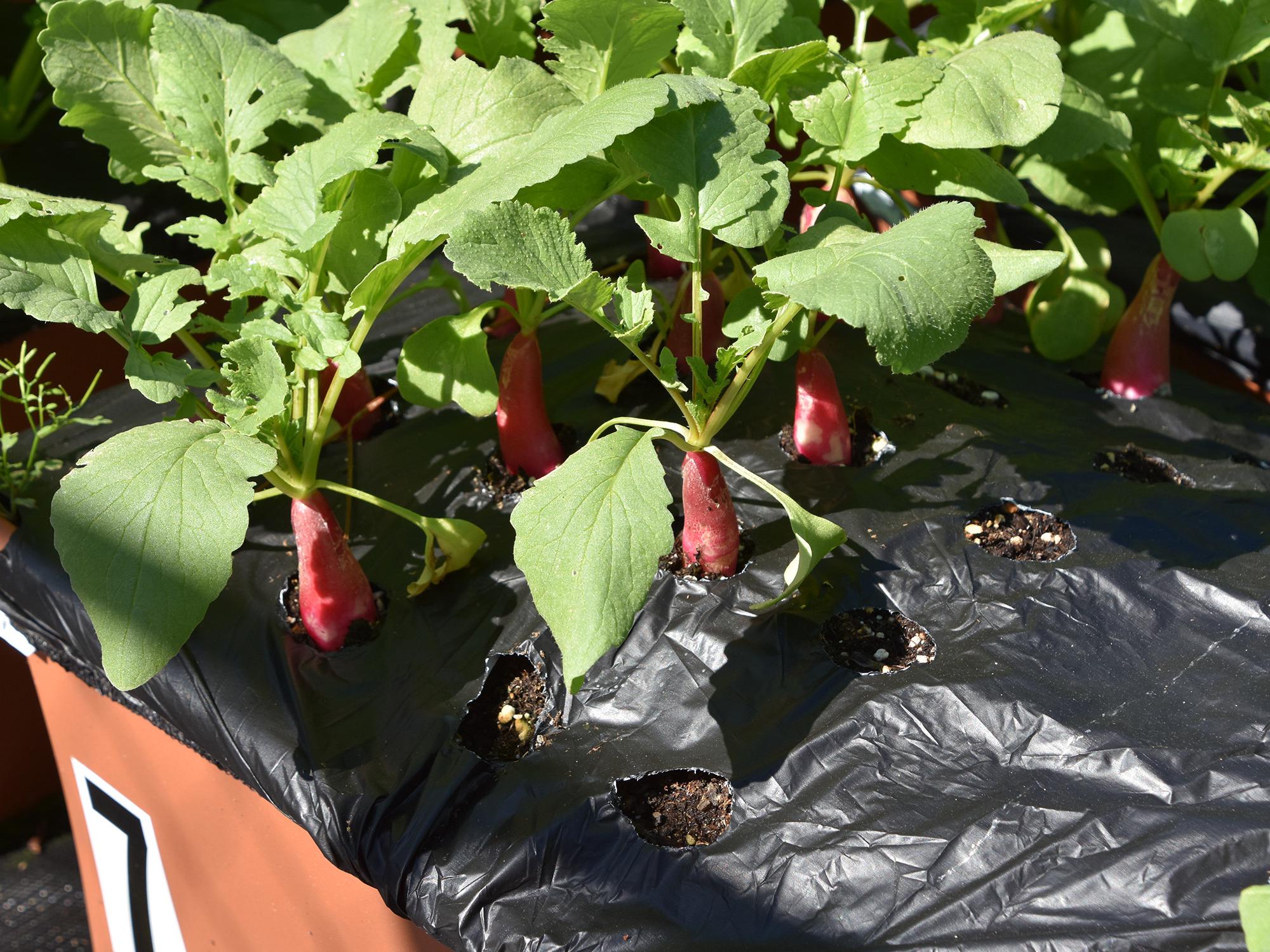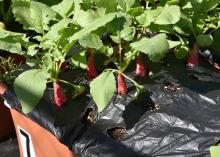Information Possibly Outdated
The information presented on this page was originally released on April 23, 2018. It may not be outdated, but please search our site for more current information. If you plan to quote or reference this information in a publication, please check with the Extension specialist or author before proceeding.
A years-long search leads to Long Beach Red radish
When I have visitors to my garden, I like to tell plant stories. It seems that almost everything I grow has a story associated with it. The stories behind the plants make them more interesting.
One of my favorite stories is about my White Profusion butterfly bush that I originally propagated in class in 1989. Another story is about my variegated Duet beautyberry, a mutation I found in 2000. I also grow a lot of heirloom vegetables, and the stories surrounding many of these varieties are interesting.
The story I’m going to tell today is a mystery about a radish, the Long Beach Red, or LBR, radish. I first learned about the LBR several years ago at the Long Beach Radish Festival.
The story starts in the early 20th century. Long Beach, Mississippi, was a major player in truck crop farming and shipping vegetables. Although they grew many vegetables, the primary crop was a radish known as the Long Beach Red. Long Beach earned the title of “Radish Capital of the World.”
Whether Long Beach actually grew the most radishes is unknown, but impressive numbers of LBRs were shipped up North during the winter. As many as 300 railroad boxcars a year left Long Beach. The LBR was so long it looked like a red carrot.
So, what did people do with all those radishes? They sliced and set them out as bar snacks in Northern saloons and beer halls.
And then the radishes vanished! There were a couple of reasons why. First, as transportation costs came down, other production areas became more favorable. And second was the development of the small, round radishes we commonly see now. They are easier and faster to produce.
After learning about the LBR at the radish festival, I set out to try to find any source of seeds. None of the catalogs listed a Long Beach Red. I searched through archives, thinking that surely with harvests as big as reported, the MSU Extension Service would have some knowledge about the variety. Nope.
So, I assumed the LBR had been lost to time. Maybe not.
Earlier this year, I came across a clue to the LBR completely by accident. One Saturday morning, I was listening to my friend Ron Wilson on his nationwide radio gardening show talk about heirloom vegetables. The topic turned to radishes, and he mentioned a favorite of his called the Cincinnati Market Radish, or CMR.
He described it as a 6- to 7-inch-long red radish with a thin skin and mild flavor. Finally, this seemed to be a reasonable lead to the elusive LBR.
Drilling down a little deeper, I found that the CMR was originally bred near Cincinnati, Ohio, in the mid-1800s. Then I learned that the seed was shipped South to be grown, and the crop was sent back to the North in the winter for bar snacks. Eureka!
Cincinnati Market Radishes are available from several seed companies. So, I went ahead and bought some from two different seed sources. I have already sown some seed, and in a few weeks, I may be harvesting the first Long Beach Reds grown on the Gulf Coast in many years.
Now there’s a plant story worth telling.



